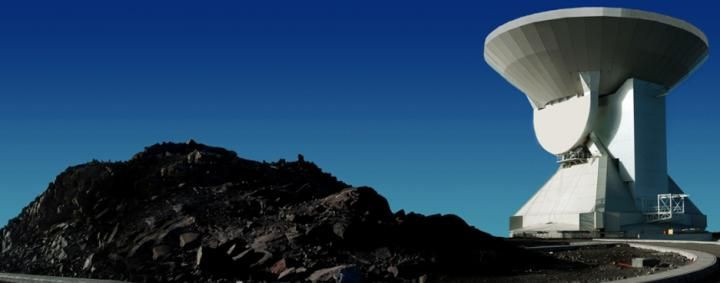Second-Oldest, -Farthest Known Galaxy In The Universe Discovered Using Large Millimeter Telescope

Using a powerful new telescope called the Large Millimeter Telescope (LMT), a team of astronomers has discovered one of the first massive galaxies to form about 12.8 billion years ago, making it one of the oldest objects in the universe.
The detection of the second most distant, star-forming galaxy was made by the international team of researchers from the University of Massachusetts Amherst and Mexico's National Institute of Astrophysics, Optics and Electronics.
“The Big Bang happened 13.7 billion years ago and now we are seeing this galaxy from 12.8 billion years ago, so it was forming within the first billion years after the Big Bang,” astrophysicist Min Yun, from the University of Massachusetts Amherst, said in a statement released on their website.
“Seeing an object within the first billion years is remarkable because the universe was fully ionized, that is, it was too hot and too uniform to form anything for the first 400 million years.”
“So our best guess is that the first stars and galaxies and black holes all formed within the first half a billion to one billion years,” he added. “This new object is very close to being one of the first galaxies ever to form.”
The object was initially observed using the Herschel space telescope. However, this was problematic because of the low resolution of the images, and the data collected was deemed unreliable for foolproof calculations.
This is where the LMT telescope — which is located on the summit of a 15,000-foot extinct volcano in Mexico’s central state of Puebla — came into play.
The distance of an object in the universe is measured using the expansion speed of the universe as a scale. This is known as the redshift, with objects farther away from the observer having a larger redshift.
According to the study published in journal Nature Astronomy, the redshift is measured using a spectral line of atoms of molecules. Each of these atoms has a discernible and discrete signature or fingerprint.
The LMT telescope began its observations in 2011 as a 32-meter millimeter-wavelength radio telescope and has since expanded to its full 50-meter diameter.
The process of light collection started in 2011 because of the sheer distance of the object from the telescope.
When fully operational, the LMT will become the largest, most sensitive single-aperture instrument of its kind in the world, heralding an exciting improvement in space viewing equipment. This will enhance the quality of space observations giving scientists more accurate data.
“This result is not a surprise, because this is what the LMT was built to do, but we are very excited,” Yun said in the release. “These high redshift, very distant objects are a class of mythical beasts in astrophysics.
“We always knew there were some out there that are enormously large and bright, but they are invisible in visible light spectrum because they are so obscured by the thick dust clouds that surround their young stars,” Yun added. “Paradoxically, the most prolific star-forming galaxies and thus the most luminous are also the most difficult to study using traditional optical telescopes like the Hubble Space Telescope because they are also the most obscured by dust.”
The team is excited on the possibilities that the LMT has opened up for space exploration. The team feels that we could stumble upon similar objects that we didn’t know existed. “Maybe they'll start popping out,” hoped Yun.
© Copyright IBTimes 2024. All rights reserved.





















